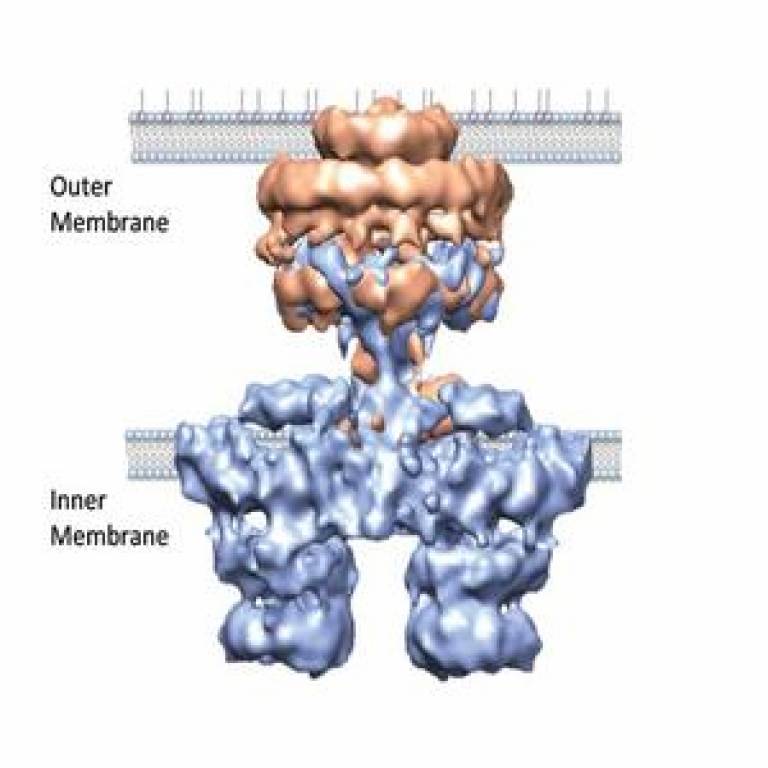Spread of antibiotic resistance understood by unravelling bacterial secretion system
10 March 2014
The system that allows the sharing of genetic material between bacteria - and therefore the spread of antibiotic resistance - has been uncovered by a team of scientists from UCL and Birkbeck, University of London.

The study, published today in Nature, reveals the mechanism of bacterial type IV secretion, which bacteria use to move substances across their cell wall. As type IV secretion can distribute genetic material between bacteria, notably antibiotic resistance genes, the mechanism is directly responsible for the spread of antibiotic resistance in hospital settings. It also plays a crucial role in secreting toxins in infections - causing ulcers, whooping cough, or severe forms of pneumonia such as Legionnaires' disease.
The work, led by Professor Gabriel Waksman at the Institute of Structural and Molecular Biology (a joint UCL/Birkbeck Institute) and funded by the Wellcome Trust, revealed that the type IV secretion system differs substantially from other bacterial secretion systems, in both its molecular structure and the mechanism for secretion.
Professor Waksman said: "This work is a veritable tour de force. The entire complex is absolutely huge and its structure is unprecedented. It is the type of work which is ground-breaking and will provide an entirely new direction to the field. Next, we need to understand how bacteria use this structure to get a movie of how antibiotics resistance genes are moved around."
Understanding bacteria's secretion system could help design new compounds able to stop the secretion process, thereby stopping the spread of antibiotics resistance genes.
Professor Gabriel Waksman (UCL Structural and Molecular Biology)
Using electron microscopy the team were able to reconstruct the system as observed in the bacteria E. coli. They saw that the mechanism consists of two separate complexes, one in the outer membrane of the cell, and the other in the inner membrane, which are connected by a stalk-like structure that crosses the periplasm - the space between the two membranes. The complexes at both the inner and outer membranes form pores in the membrane, via which substances can be secreted.
Understanding the structure of the secretion system will help scientists uncover the mechanism by which it moves substances across the inner and outer membranes. It could eventually help scientists develop new tools for the genetic modification of human cells, as the bacteria could act as a carrier for genetic material, which could then be secreted into cells.
Professor Waksman said: "Understanding bacteria's secretion system could help design new compounds able to stop the secretion process, thereby stopping the spread of antibiotics resistance genes. Given that antibiotics resistance has become so widespread and represents a grave threat to human health, the work could have a considerable impact for future research in the field of antimicrobials."
Links
- Research paper in Nature
- Professor Gabriel Waksman's academic profile on Iris
- Institute of Structural and Molecular Biology
- Wellcome Trust
Image
- Bacterial type IV secretion system structure reveals how antibiotics resistance genes move from one bacterium to another.
 Close
Close

